What’s Up: May 2019 Skywatching from NASA
| Credit | NASA/JPL-Caltech (Presenter Voice: Preston Dyches) |
|---|---|
| Historical Date | May 2, 2019 |
| Language |
|
What's up in the May sky? A meteor shower produced by debris from Halley's Comet, asteroids named after dinosaurs, and a "blue moon" on May 18th.
Transcript
What's Up for May? Meteors from Halley's Comet, dinosaurs in the sky, and a blue moon rises...
May is a good month to spot some shooting stars, as the Eta Aquarid meteor shower reaches its peak the morning of the 6th.
These meteors are actually bits of rock and dust left behind by one of the most famous comets, Comet Halley, which swings through the inner solar system every 75 years.
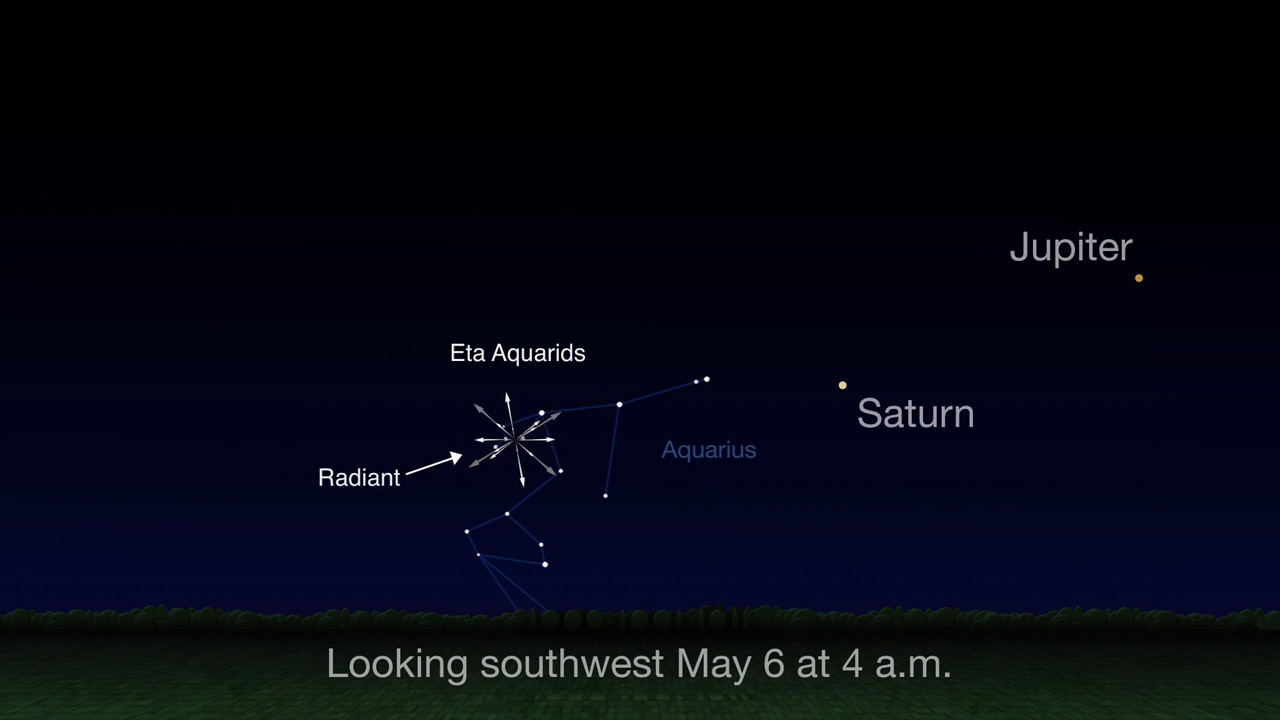
Each year when Earth crosses through Halley's trail of dusty debris, we see some of that material burn up in our skies as meteors.
The shower produces good numbers of meteors, especially for viewers in the Southern Hemisphere. You'll see fewer in the Northern Hemisphere because the shower's point of origin, called the radiant, doesn't rise until well after midnight, and won't get too high in the sky before dawn (sky chart).
Still, it's always worth a look to catch a few shooting stars. And this year, there'll be no bright Moon to get in the way, making for great viewing under clear skies. Just face eastward, between about 3 a.m. and dawn, and look up.
Although the peak is predicted to be on May 6th, you should be able to catch a few meteors streaking across the sky any morning the week before or after.
You probably know that an asteroid slammed into Earth 65 million years ago, ending the reign of the dinosaurs.
But did you know there are asteroids named after dinosaurs?
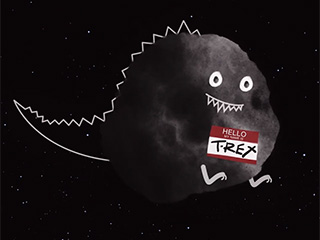
A handful of the more than 20,000 named asteroids are named for types of the extinct reptiles, and two of them make their closest approaches to Earth in May: Asteroid 9951 Tyrannosaurus on May 19th, and Asteroid 9954 Brachiosaurus on May 28.
These ancient space rocks are too faint to be seen without a large telescope. They're residents of the main asteroid belt between Mars and Jupiter (chart), and never come too close to Earth.
But there are plenty of asteroids out there that do, which is one reason why NASA searches for, tracks and explores asteroids — to be better prepared if we ever find one that might pose a threat.
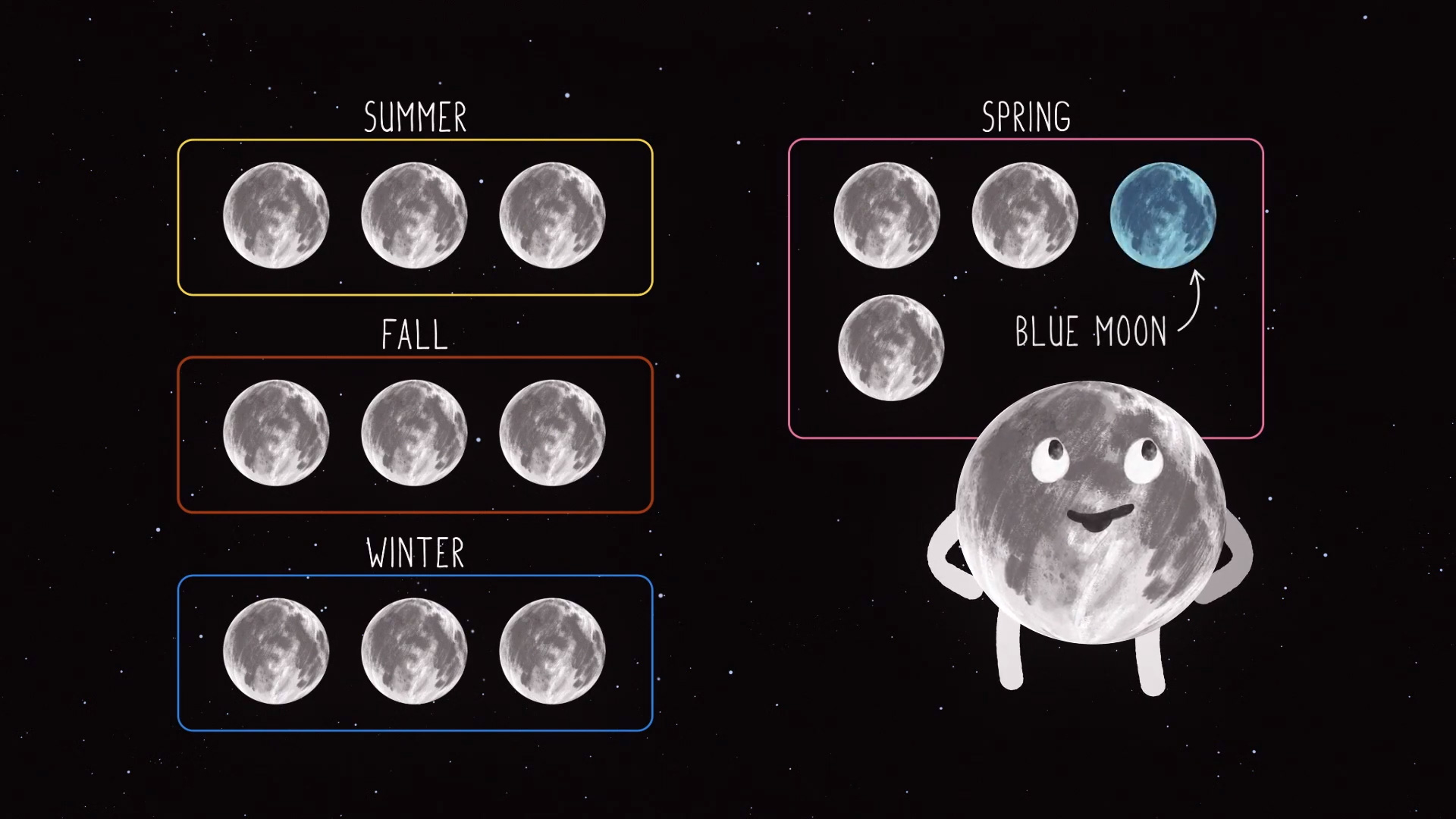
The full moon on May 18 will be a "Blue Moon."
Usually there are three full moons each season, but occasionally there are four. Historically, the third full moon in a season with four full moons is called a blue moon.
A blue moon doesn't actually look blue, but they are kind of rare — on average, they occur about every two-and-a-half years.
May 18 also marks the 50th anniversary of the launch of NASA's Apollo 10 mission to the Moon, in 1969. It was like a dress rehearsal for the first Moon landing, setting the stage for Apollo 11 and that "one small step" just two months later.
Here are the phases of the Moon for May.
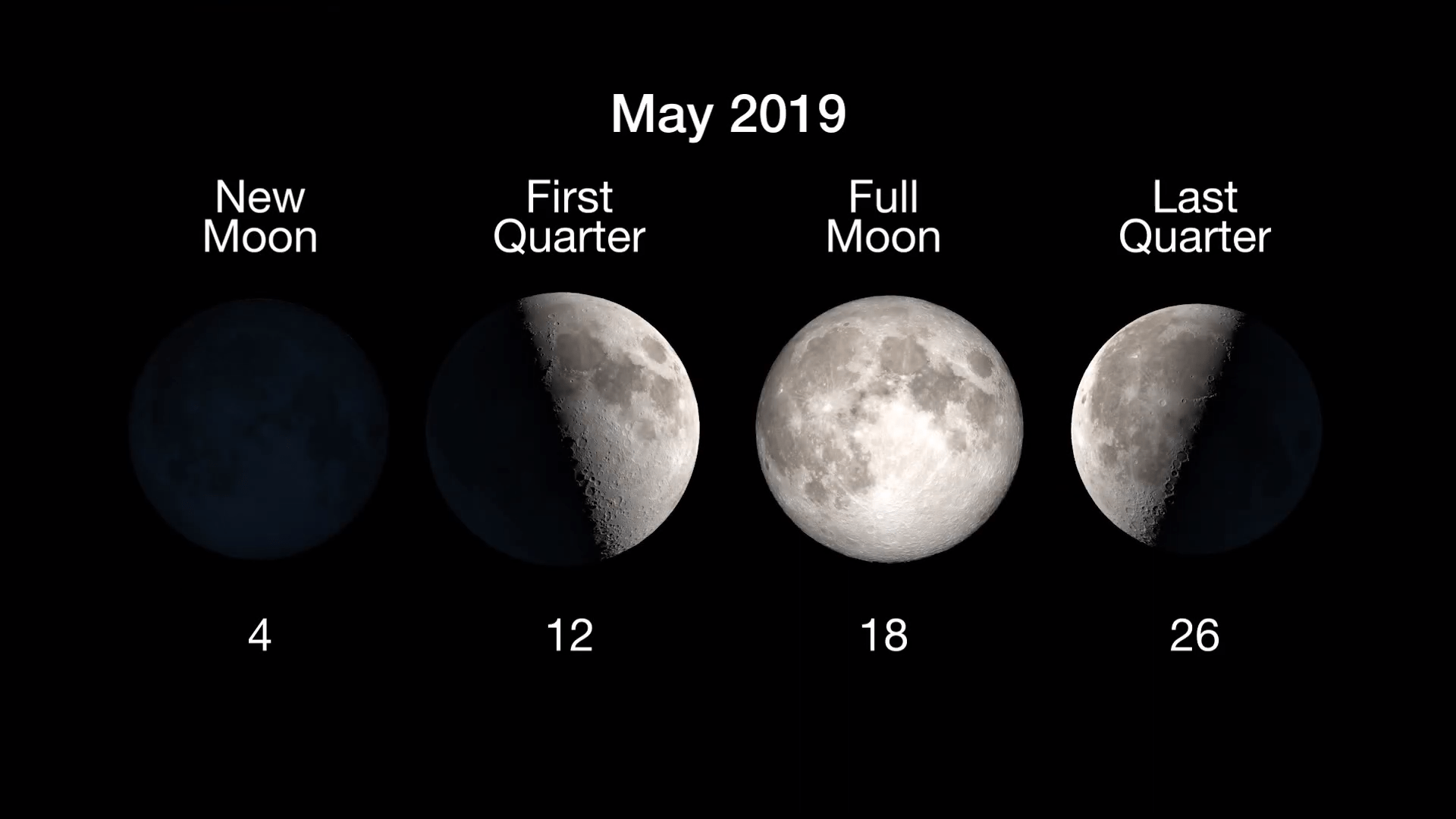
You can catch up on all of NASA's current and future missions at nasa.gov.
That's all for this month.
About the Eta Aquarid Meteor Shower
The Eta Aquarids peak during early May each year. Different numbers of meteors are seen north and south of the Equator because the place on the sky where the Eta Aquarids appear to come from, the constellation Aquarius, is higher in the sky in the Southern Hemisphere than it is in the Northern Hemisphere.
To view the Eta Aquarids, it's best to find an area well away from city lights. Come prepared with a sleeping bag, blanket or lawn chair. Lie flat on your back with your feet facing east and look up, taking in as much of the sky as possible. After about 30 minutes in the dark, your eyes will adapt and you will begin to see meteors.
More about the Eta Aquarids: https://solarsystem.nasa.gov/asteroids-comets-and-meteors/meteors-and-meteorites/eta-aquarids/in-depth/
More about meteor showers in general: https://solarsystem.nasa.gov/asteroids-comets-and-meteors/meteors-and-meteorites/in-depth/
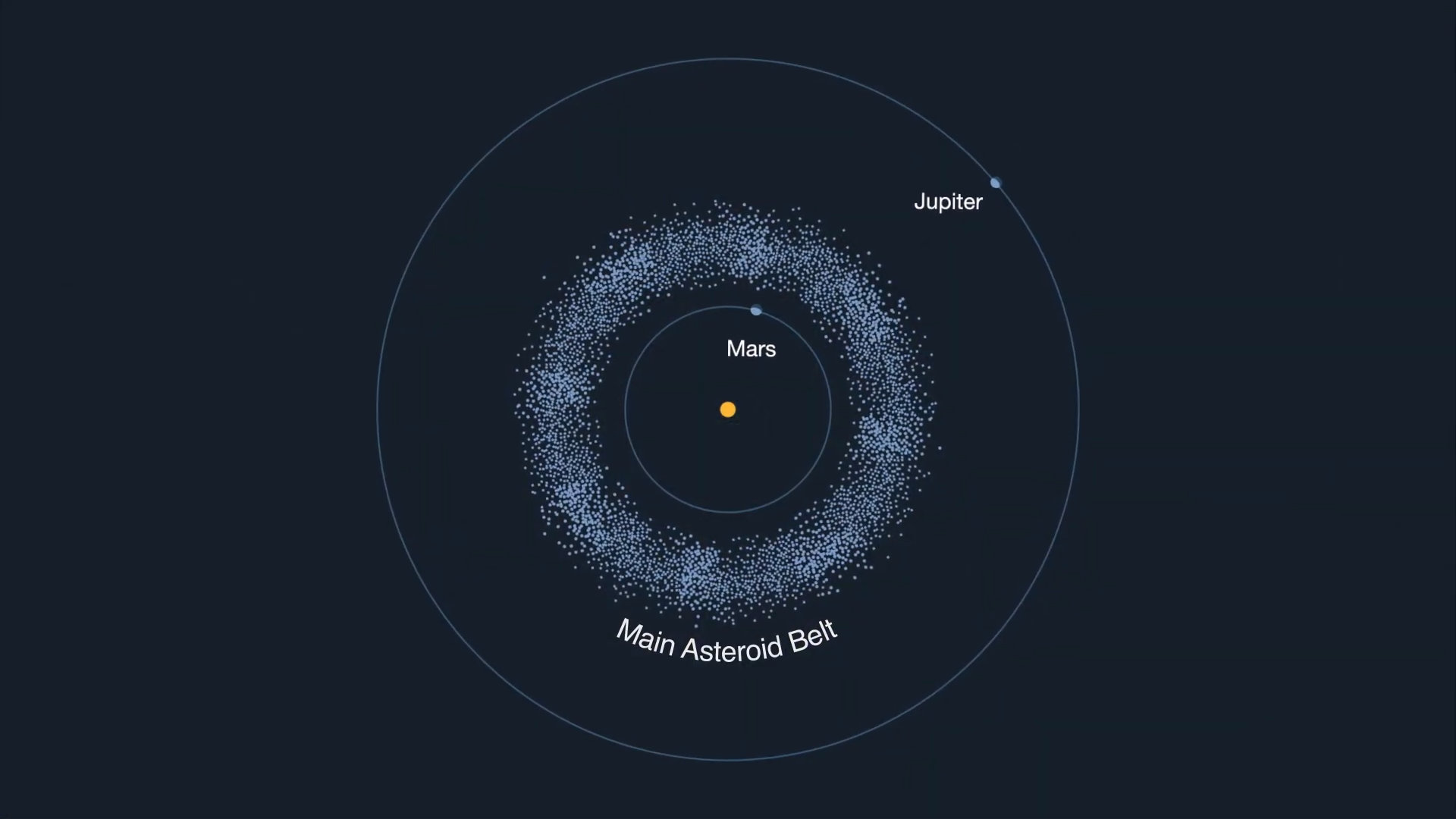
About Asteroid Names
Asteroids, sometimes called minor planets, are rocky remnants left over from the early formation of our solar system. As of 2019, there are over 21,000 asteroids that have been assigned names by the International Astronomical Union (IAU). Per the IAU, "the discoverer of a particular object has the privilege of suggesting a name to a committee that judges its suitability." In addition to the asteroids discussed in this month's video, there are several other asteroids with dinosaur names, including: 9937 Triceratops, 9949 Brontosaurus, 9880 Stegosaurus, 9860 Archaeopteryx, 58671 Diplodocus and 9941 Iguanodon.
In May 2019, asteroid 9951 Tyrannosaurus comes within 1.232 AU of Earth, while 9954 Brachiosaurus comes within 2.11 AU of Earth.
More about Asteroid 9951 Tyrannosaurus: https://ssd.jpl.nasa.gov/sbdb.cgi?orb=1;sstr=9951
More about Asteroid 9954 Brachiosaurus: https://ssd.jpl.nasa.gov/sbdb.cgi?orb=1;sstr=9954
About Blue Moons
Originally, the term "Blue Moon" referred to the third full Moon in a season that has four full Moons. The earliest known reference to a Blue Moon in the English language is the phrase "... the mone is blewe ..." from a pamphlet published in 1528. Some writers speculate that "blue" came from "belewe," the phrase meant "Betrayer Moon," and that the name referred to how an extra Moon in a season confused or "betrayed" the dates for Lent and Easter.
There's another meaning of the term "blue moon" that refers to a second full moon in a month, but it's a more recent development, originating in 1946.
About Apollo 10
Launched on May 18, 1969, the Apollo 10 mission encompassed all aspects of an actual crewed lunar landing, except the landing itself. It was the first flight of a complete, crewed Apollo spacecraft in operation around the Moon. Objectives included a scheduled eight-hour lunar orbit of the separated lunar module and descent to about nine miles (14 kilometers) above the moon's surface before ascending for rendezvous and docking with the command and service module in lunar orbit.
Find out more about Apollo 10 at: https://www.nasa.gov/mission_pages/apollo/missions/apollo10.html
More about the Apollo program at https://www.nasa.gov/specials/apollo50th/ and https://solarsystem.nasa.gov/news/890/who-has-walked-on-the-moon/
Additional Resources
Additional astronomy & skywatching info from NASA's Night Sky Network: https://nightsky.jpl.nasa.gov
